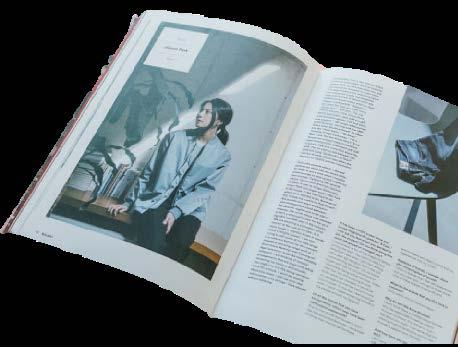
2 minute read
Place
The Stockholm based retailer operates in 60 retail stores in “24 cities, 14 countries on 4 continents” (Acne Studios, 2018/19), with their flagship stores situated in Paris, London, New York City, Los Angeles and Tokyo (Acne Studios, 2020). However, unlike many other retailers, Acne Studios prefer to establish stores in off centre locations, with its first Paris store in a converted garage that is “hard to find” (Cochrane L, 2013). Acne Studios have made the conscious decision to limit the number of stores and use exclusive distribution channels to maintain the exclusivity of the brand and its products (appendix k). Therefore, this means customers will have to travel in order to make a purchase (Farfan, 2019). However, the brand does operate online stores in 48 countries . Acne Studios produces 1.5 million products annually, with its range of high-end ready-to-wear men’s and women’s clothing being manufactured by 76 suppliers in 142 factories across 15 countries (Acne Studios, 2017/18). Their main manufacturing operations are carried out in Europe, China, Turkey, South Korea and Morocco (Acne Studios, 2015). The luxury fashion retailer aims to maintain operations within countries that have been deemed ‘low risk’ by the Fair Wear Foundation (Acne Studios, 2015/16). This means that 96% of production has been monitored and deemed to have ethical working conditions for workers (Fair Wear Foundation, 2020). Acne Studios operate with more of a direct business relationship with its supply factories as half of their produc-

Advertisement
PROMOTION
Acne Studios is “one of the fastest growing luxury companies” yet they do not promote their brand in the same commercial way as others (Van Elven M, 2018). Acne Studios utilise an interesting tactic of promotion and communication as they intentionally refrain from advertising and rely mainly on word of mouth. Even though Acne Studios do have different social media channels, they do not use their social media platforms to get branded content to their 2.9m followers. Instead, Acne posts images from behind the scenes of their events and pieces of artwork that aim to offer an insight into the brand. Creative director, Jonny Johansson says, “we never paid anyone we don’t want to” however “that doesn’t mean we don’t like celebrities wearing our clothing, but that strategy is cold and hard and short-lived” (Cochrane L, 2013). The fact that Acne Studios does not heavily engage in digital content marketing or celebrity endorsement allows the brand to remain mysterious and make the customers want to know more about it therefore will visit an actual store rather than just browse online. In terms of advertising, Acne Studios rarely employs external advertising, instead consciously promoting their brand through a bi-annual magazine, Acne Paper. This magazine collaborates with other artists and designers. Acne Studios does however show at Paris fashion week. The use of catwalks in their promotional mix is used to “seduce and tempt viewers by showing idealized vision of garments” (Arnold R, 2009, p3).








